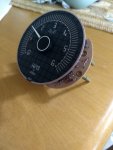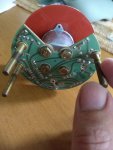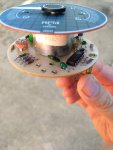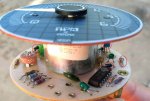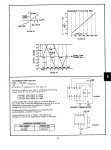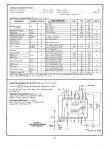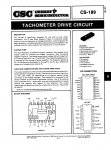1987 FourWinns 3.0 Mercruiser. My tach stopped working. It doesn't move at all when I turn on the key, or start the engine. I get 12V measured between the purple and black wires, and the gray wire pulses when the engine is running (as measured by my "touch it and get electrocuted" meter  After opening it up, I cleaned the contacts on the 4-way metal switch and tried it in all positions, and exercised the potentiometer, no effect. I also sprayed electrical contact cleaner down the hole the needle comes out of and exercised the needle.
After opening it up, I cleaned the contacts on the 4-way metal switch and tried it in all positions, and exercised the potentiometer, no effect. I also sprayed electrical contact cleaner down the hole the needle comes out of and exercised the needle.
I've tried looking up parts based on the numbers shown on the board and the "can" for the needle movement with no luck. I don't see any obviousl burnt or otherwise damaged components. I'm no electronic expert, but could I replace all the capacitors like I did on my old stereo to get it working? I could just get a new tach, but I'd just as soon not lose the matching (super 80s) gauge face and needle unless I had to. Does anyone make new tach internals I could put behind them? Any other ideas?
Thanks!
I've tried looking up parts based on the numbers shown on the board and the "can" for the needle movement with no luck. I don't see any obviousl burnt or otherwise damaged components. I'm no electronic expert, but could I replace all the capacitors like I did on my old stereo to get it working? I could just get a new tach, but I'd just as soon not lose the matching (super 80s) gauge face and needle unless I had to. Does anyone make new tach internals I could put behind them? Any other ideas?
Thanks!





















